Masuda City Tourist Information Center
Mail:masuda.shimane@gmail.com
〒698-0024 17-2 Ekimae-cho Masuda-shi Shimane Japan
Iwami Kagura
Place: Masuda Station Bildg. EAGA 3F
Dates: Every Saturday(April - August, January - March)
Time: 19:30〜21:00
※ Please join us for watching the delication kagura at a Shrine between September and November.
Go to Kagura Programs
What comes to your mind when you think of Japanese traditional performing
arts? Is it Noh, Kyogen, Kabuki, or Bunraku?
In
In Iwami Kagura, there are many characters such as majestic deities, evil
ogres, fox specter, agile young warriors, a fair maiden, her grieving parents,
and gigantic “Orochi” serpents who all show a dynamic performance on stage.
It was originally performed at Shinto shrines during the annual autumn
festival from evening until the next morning. Today it is also presented in theaters as well as at special events and
festivals, and many people, regardless of age, gather to watch.
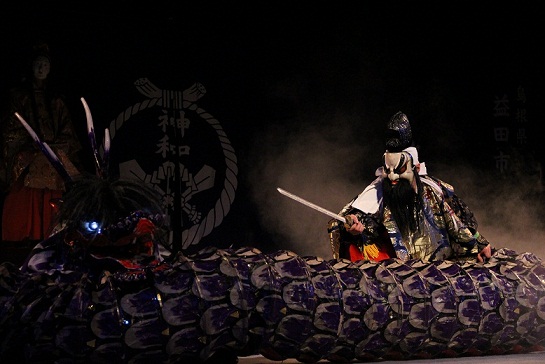

<Music>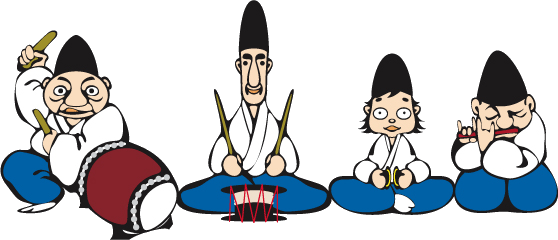
The fast-tempo eight-beat rhythm is characteristic of Iwami Kagura, and
when people hear the sound of the flute and drums playing, they follow
the sound.
<Masks and costumes>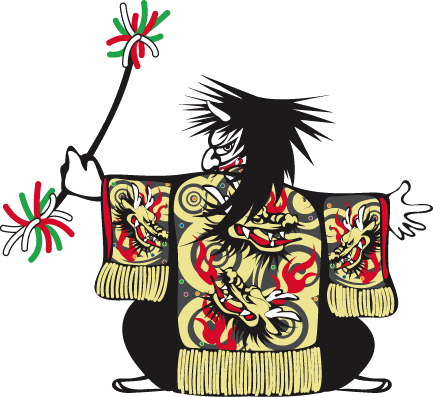
While wooden masks are mostly used in kagura in other regions, these expressive
masks are made of many layers of Sekishu Japanese washi paper. These durable
and light masks allow Iwami Kagura to be dynamic. For the masks of deities
and ogres, the bigger the mask, the stronger the character it signifies.
The elaborate costume is embroidered with great amount of gold and silver threads. Even ogres and bandits wear splendid
costumes and mesmerize the audience.
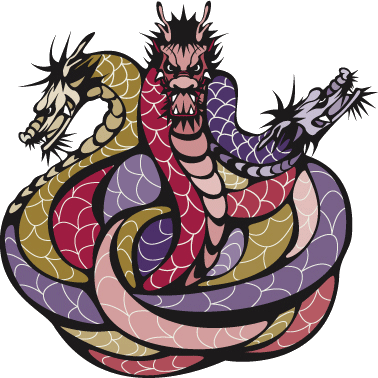
Spooky ogres appear out of ghostly fog, Orochi spew fire and sparks, and a lady specter changes instantly from a beauty to an ogre to draw the audience into the stories.
<The dancers and musicians>
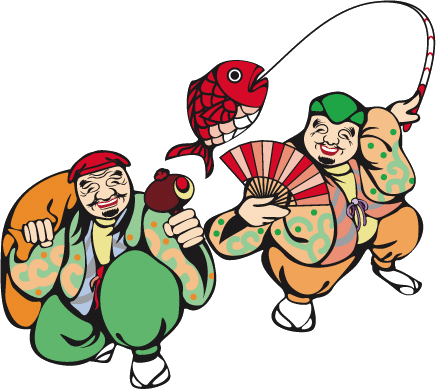
In Iwami Kagura, although the dancers and musicians give high-quality performances, they are not professionals, but local people who have day jobs. In
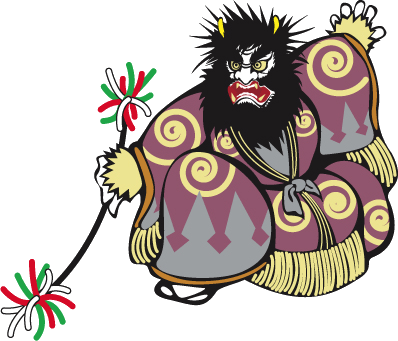
Wherever Iwami Kagura is performed, there are young children dancing around
the stage like mini kagura dancers. They often join children’s kagura groups
and give good performances at schools and local festivals. Iwami Kagura
is enjoyed by people of all ages and the young respect their seniors as
trainers and masters.
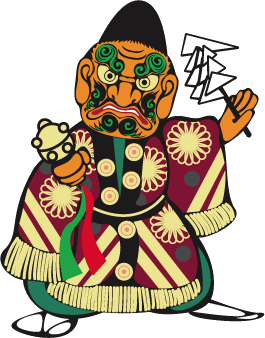
There are more than 30 plays currently being performed. The repertoire includes ritual dances, classic narrative plays, and newly created plays.